1. Erector Set
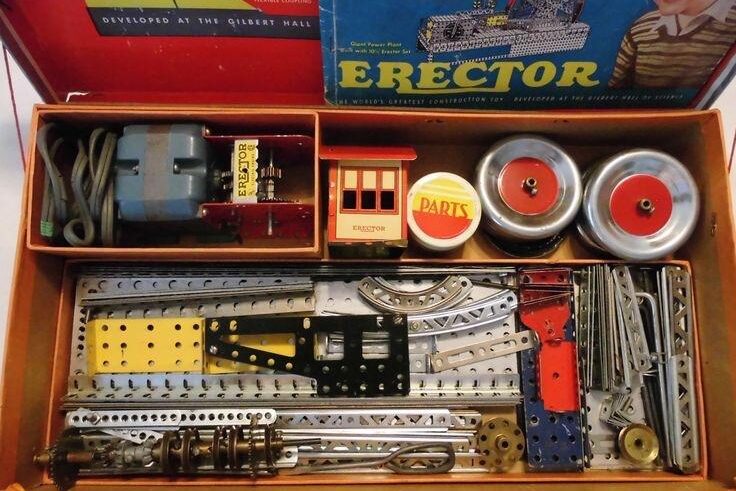
When Childhood Was Built from Imagination (and Sometimes Danger). Before screens and smartphones, boomer kids filled their days with toys made from wood, metal, and early plastics, and games that played out in the street, on the playground, or in the yard. They didn’t need batteries or Wi-Fi, just neighborhood friends, good weather, and a willingness to get a little dirty or bruised.
The Erector Set was less of a toy and more of a training ground for future engineers. Made of real metal beams, screws, nuts, and tiny motors, it allowed kids to build working bridges, cars, or cranes with nothing but patience and trial and error. Unlike today’s building kits that snap together with colorful plastic pieces, this one came with sharp edges, small bolts, and instructions that required real focus. The sense of pride after completing a moving structure was enormous, and many kids left their creations proudly displayed for weeks. Though it seems dangerous by today’s standards, the Erector Set gave children an early taste of mechanics and problem-solving that few toys today could match.
2. Lincoln Logs

Inspired by the log cabins of the American frontier, Lincoln Logs were a simple yet endlessly creative toy. Each piece was a notched wooden beam that stacked neatly to create cabins, forts, or even entire miniature villages. Kids learned balance and design while quietly constructing their masterpieces, only to turn those peaceful towns into battlegrounds for cowboy and soldier play. Unlike flashy toys, the appeal was in watching a structure take shape piece by piece, then reimagining it into something new the next day. For many, the smell and feel of the smooth wood are still tied to the memory of childhood afternoons spent building dreams from simple logs.
3. Lite-Brite
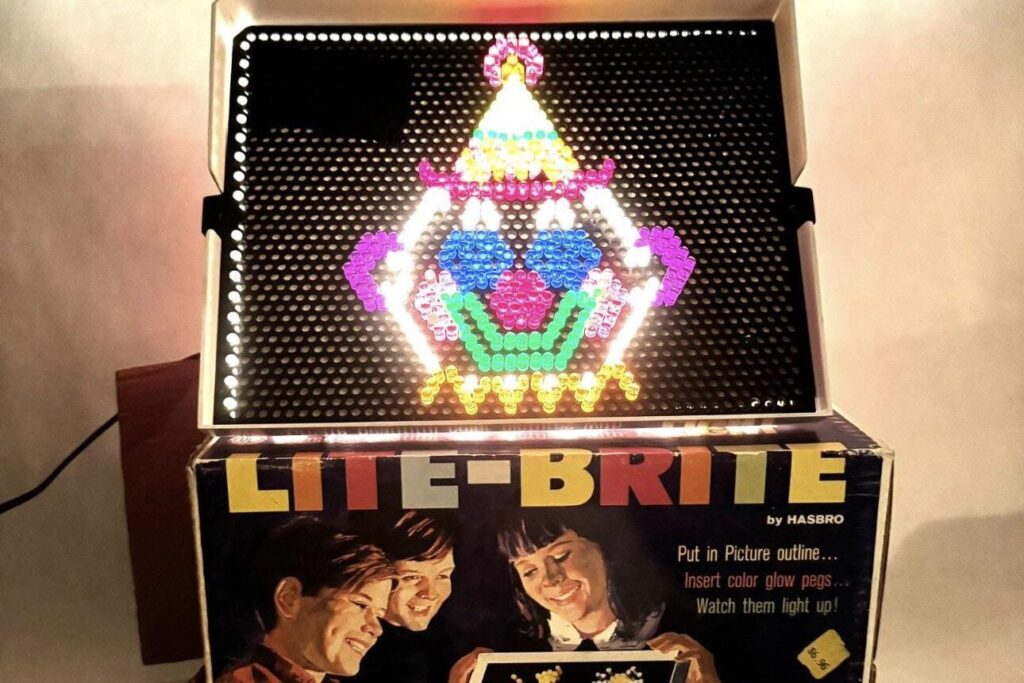
Lite-Brite brought a sense of magic to kids’ rooms when it arrived in the late 1960s. The concept was simple, colored pegs were pushed into a black grid with a light bulb behind it, creating glowing pictures in the dark. Each design required patience, as pegs had to be placed carefully, and there was always the thrill of switching off the lights to see the picture come alive. The images were simple, flowers, houses, animals, but the glowing effect made every creation feel special. It wasn’t flashy or fast, but it sparked creativity and gave kids the chance to proudly show off their glowing artwork to family and friends.
4. Spirograph

Spirograph transformed geometry into a mesmerizing art form. Using plastic gears and pens, kids could spin circles and loops into dazzling spiral designs. The results looked intricate and professional, far beyond what most kids could draw freehand. It was strangely soothing, with the repeated motions of tracing gears around paper, and the colorful patterns often ended up decorating notebooks, school folders, or bedroom walls. Unlike instant digital tools today, Spirograph required steady hands, patience, and experimentation, but the payoff was artwork that felt both personal and precise. For many boomers, the satisfaction of creating something beautiful from a handful of gears and pens still stands out.
5. Cap Guns

Cap guns were an essential part of the cowboy craze of the ’50s and ’60s. They came in shiny metal or plastic designs and used rolls or rings of tiny caps that made a sharp pop and puff of smoke. Kids dressed up in cowboy hats, boots, and holsters, staging dramatic duels in the yard or neighborhood streets. The sound and smell of the caps were unforgettable, and games often stretched on until dark. While today’s kids might see them as outdated compared to realistic video game battles, cap guns gave an entire generation the thrill of imagination, roleplay, and the feeling of being part of their favorite Western adventures.
6. BB Guns

For many boomer boys, owning a BB gun was considered a rite of passage. These air-powered guns fired small metal pellets and were used for target practice on tin cans, makeshift bullseyes, or backyard competitions. They felt serious, like a step toward adulthood, and came with warnings that were often learned the hard way, like the classic “you’ll shoot your eye out.” While accidents did happen, BB guns taught lessons in responsibility and care that many kids carried with them into adulthood. They weren’t just toys but a first introduction to something that felt real, and for some, they sparked a lifelong interest in marksmanship or hunting.
7. Rock ’Em Sock ’Em Robots

Introduced in the mid-1960s, Rock ’Em Sock ’Em Robots brought the excitement of boxing into toy form. Two players controlled a red and a blue robot in a small ring, pushing buttons to throw punches until one landed the perfect uppercut that sent the opponent’s head popping up. Matches were fast and loud, often ending in laughter and shouts for a rematch. The satisfying “clunk” of the robots’ punches is a sound many boomers still remember. While simple compared to today’s electronic fighting games, Rock ’Em Sock ’Em Robots captured the competitive spirit and playful rivalry of childhood in a way that never really needed updating.
8. Creepy Crawlers
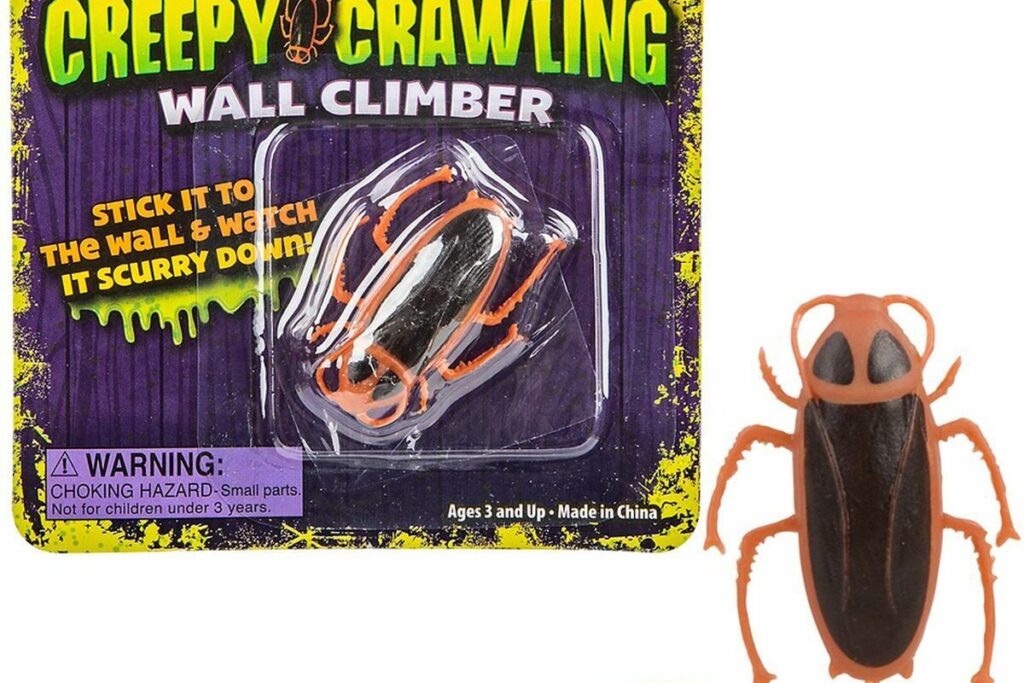
Creepy Crawlers gave kids the thrill of making their own toys, though it came with risks. The set included metal molds and bottles of liquid “Plasti-Goop,” which kids poured into shapes of bugs, lizards, and worms. The molds were then heated on a small electric “oven” until the creations solidified into rubbery figures. The smell of melting goop filled the air, and the results, slimy, colorful bugs, were perfect for scaring siblings or decorating play sets. Safety wasn’t much of a concern, and burned fingers were part of the deal. Despite its hazards, Creepy Crawlers inspired creativity and gave kids the fun of producing something with their own hands.
9. Lawn (Darts) Jarts
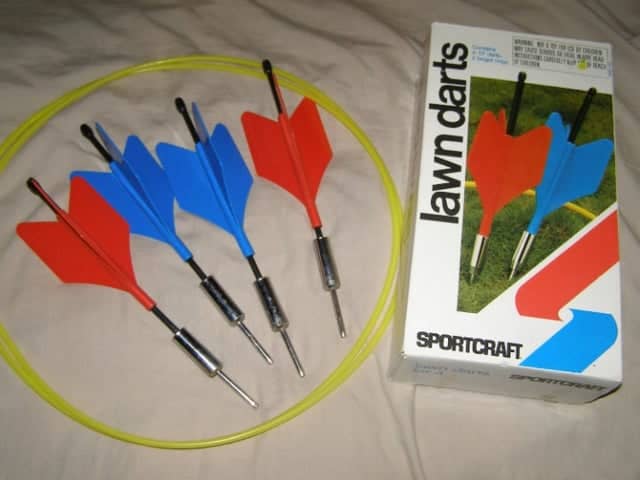
Also known as Javelin Darts, Lawn Jarts were a summertime favorite that turned backyards into makeshift game courts. Players tossed large darts with heavy metal tips toward a plastic ring target laid on the grass. The goal was accuracy, but the risk was obvious, those darts could stick into the ground or land dangerously close to players. Despite the hazards, they were wildly popular at picnics, barbecues, and block parties, offering hours of competitive fun. By the late 1980s, safety concerns led to their ban, but for boomers, Lawn Jarts remain one of those “only in the old days” memories of games that were thrilling, slightly reckless, and unforgettable.
10. Super Ball
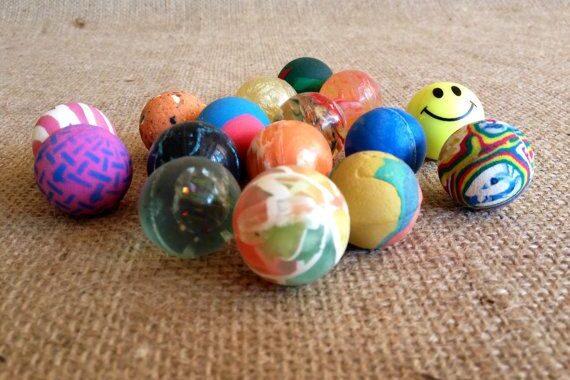
When the Super Ball arrived in 1965, it was unlike anything kids had seen before. Made from a unique synthetic rubber called Zectron, it had an extraordinary bounce, so much so that it could ricochet off walls, pavement, or even soar over rooftops. Part of the fun was in its unpredictability, as no one could fully control where it would land once launched. Indoors, it often spelled disaster for lamps and picture frames, but outdoors, it created endless laughter and chaos. The Super Ball was cheap, simple, and almost impossible to wear out, making it one of the most iconic toys of its time.
11. Shaker Maker
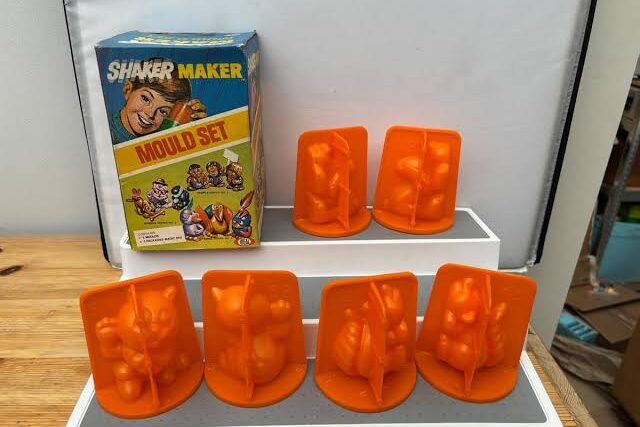
Shaker Maker was part science experiment and part craft project, and it stood out for how hands-on it was. Kids would mix a special powder with water in a plastic mold, shake it until it thickened, and then pop out small figures to paint and play with. The process was messy, with spills and sticky fingers almost guaranteed, but that was half the fun. No two creations ever turned out exactly the same, and kids loved the surprise of seeing what they had made. It wasn’t polished or perfect like today’s mass-produced toys, but the sense of ownership and creativity made Shaker Maker a favorite for children who enjoyed making something from scratch.
12. Chemistry Sets
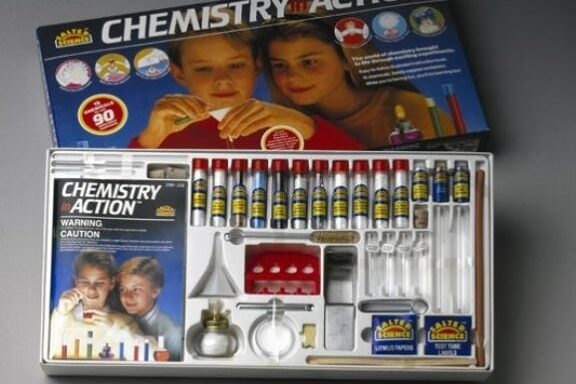
Vintage chemistry sets were equal parts educational and hazardous, giving kids a taste of real science long before safety standards limited what could be included. These sets often contained alcohol burners, glass tubes, acids, and even small samples of radioactive materials for “nuclear experiments.” They encouraged curiosity and experimentation but also led to plenty of minor explosions, stained kitchen tables, and the occasional singed eyebrow. For many future scientists, this was their first introduction to chemistry and the thrill of discovery. Looking back, parents were surprisingly relaxed about letting children play with fire, chemicals, and fumes in the name of learning, but the excitement they created is unforgettable.
13. Chatty Cathy Doll
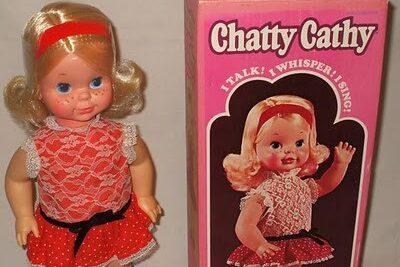
Debuting in 1959, Chatty Cathy became one of the first and most popular talking dolls. With a pull string in her back, she could “speak” one of a dozen pre-recorded phrases, giving kids the sense of having a doll that could really talk to them. Her cheerful but slightly tinny voice made her seem magical to children of the time. For many young girls, Chatty Cathy was more than just a toy, she was a companion who could “chat” back during hours of play. Some found her voice a little eerie, but that didn’t stop her from becoming a beloved part of childhood for countless boomer families.
14. Thumbelina Doll
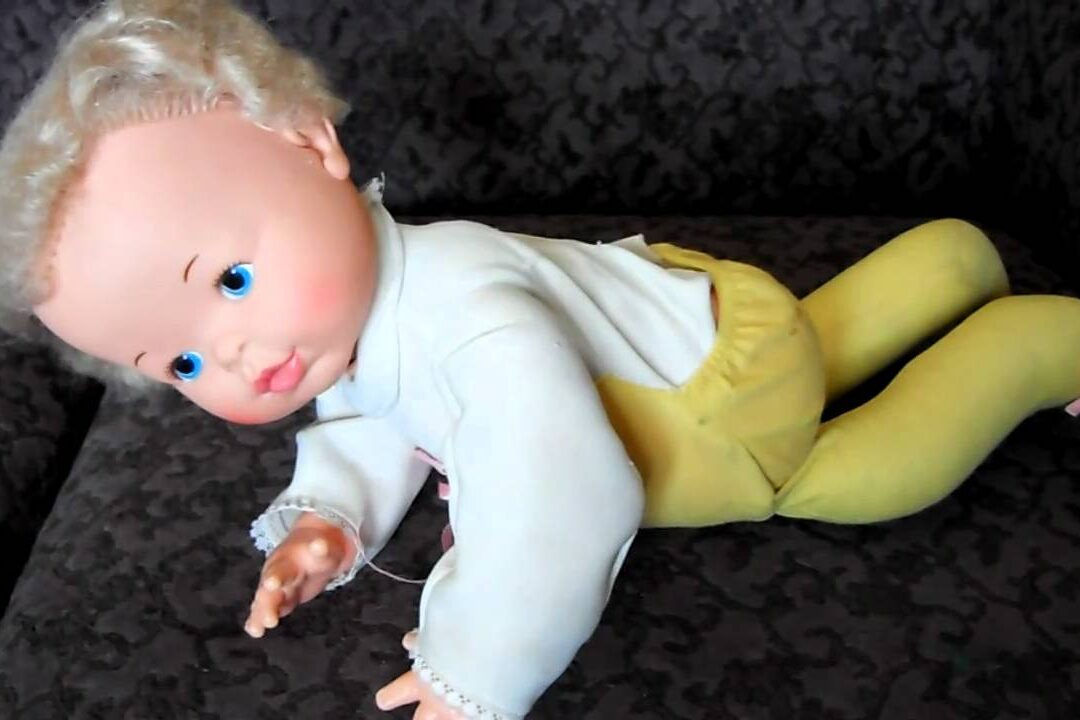
Released in 1961, Thumbelina was a baby doll unlike any before her. She had a soft body for cuddling but also a wind-up mechanism that made her wiggle and squirm like a real infant. This added movement made playtime more realistic and gave kids the feeling of caring for a “living” doll. Thumbelina was small enough to carry around everywhere, and many children became deeply attached to her. Over time, her wind-up parts often wore out, but the bond kids formed with their dolls lasted much longer. She represented a new wave of toys that blurred the line between imagination and realism.
15. Dawn Dolls

From 1970 to 1973, Dawn Dolls became a fashionable alternative to Barbie. Standing only six inches tall, these dolls had glamorous outfits, stylish hairdos, and entire collections of accessories, from cars to playsets. Their smaller size made them easier to carry around and trade with friends, and many kids saw them as the perfect “pocket-sized” fashion dolls. Although they had a short run on the market, Dawn Dolls left a strong impression on those who collected and played with them. For some boomers, their little wardrobes and big personalities are still remembered as a bright spot of childhood play.
16. Clackers
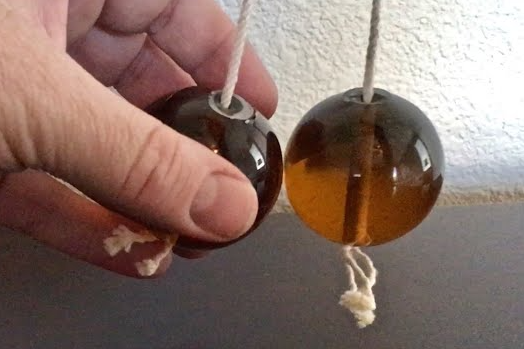
Clackers were one of the noisiest, and sometimes most painful, fads of the late ’60s and early ’70s. Made of two hard acrylic balls attached to a string, the goal was to swing them up and down so they clacked together rhythmically above and below your hand. Once mastered, they created a mesmerizing sound and visual effect, but misses could mean a sharp smack on the wrist or knuckles. Despite the risks, kids carried them everywhere, practicing endlessly to perfect their skills. They were simple, inexpensive, and addictive, though many parents and teachers weren’t exactly fans of the constant clacking echoing through homes and classrooms.
17. Water Wiggler

The Water Wiggler was a summer staple starting in 1962, and it brought pure chaos to backyards. It was essentially a plastic figure attached to a garden hose, spraying water in wild, unpredictable directions as it flailed around. Kids laughed and squealed as they tried to dodge or chase it, though it often smacked someone in the face mid-play. While it wasn’t the safest toy, it was unforgettable fun on hot afternoons. The unpredictable spray made it exciting every time, and many kids ended up soaked long before they planned to be. It was messy, silly, and perfectly suited for carefree childhood summers.
18. Slip ’N Slide
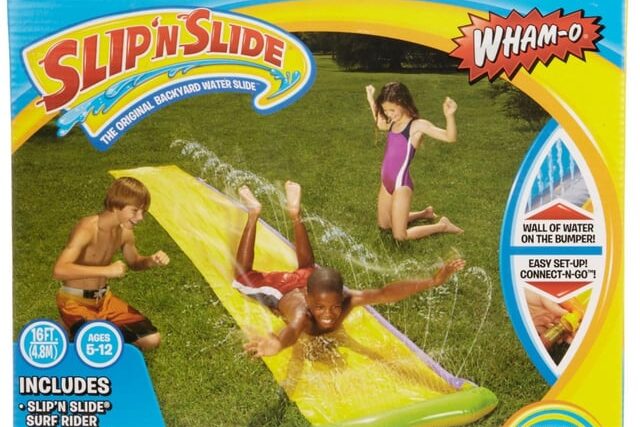
Released in 1961, Slip ’N Slide transformed ordinary lawns into backyard water parks. It was just a long sheet of slick yellow plastic staked to the ground, with a hose feeding water down its length. Kids would sprint and dive onto it, gliding along the surface with a mix of speed and laughter. Wipeouts were common if the ground wasn’t perfectly smooth, but that was part of the thrill. The Slip ’N Slide was an instant hit at summer gatherings, offering hours of outdoor fun without needing a pool. For boomers, nothing captured the carefree spirit of summer play better than sliding across the lawn under the sun.
19. Skip Ball / Lemon Twist
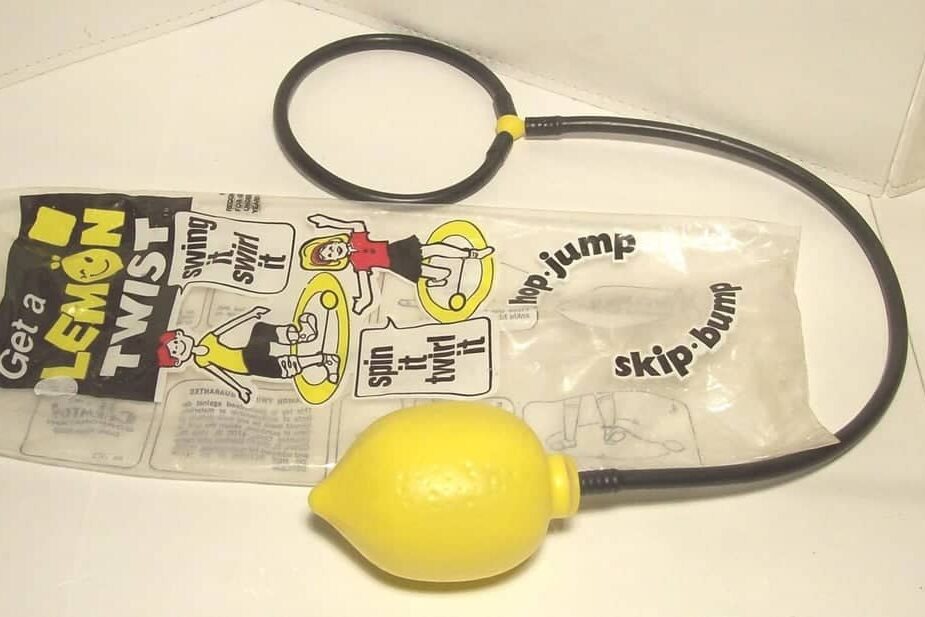
Before the Skip-It craze of the ’80s, there was Skip Ball, also known as Lemon Twist. It was a plastic ball or lemon-shaped weight attached to a loop worn around one ankle. Kids swung it incircles while hopping over it with the other foot, turning it into both a game and a workout. Mastering the rhythm took practice, and competitions with friends often turned into all-day challenges. It was simple, portable, and could be played almost anywhere, from driveways to playgrounds. For many boomers, the sound of the plastic ball skipping along the pavement is an instant throwback to childhood afternoons.
20. Chinese Jump Rope

Chinese Jump Rope added a unique twist to playground games when it became popular in the late ’60s. Using a stretchy loop of elastic around the ankles of two players, a third person jumped in and out in choreographed patterns. The rope was gradually raised higher, knees, thighs, even waist level, for bigger challenges. Success required rhythm, agility, and teamwork, and the best players could keep going at lightning speed without missing a beat. Unlike traditional jump rope, this game allowed for creative sequences that kids often memorized like dance routines. It was simple, portable, and endlessly social, making it a favorite recess pastime.
21. Kick the Can
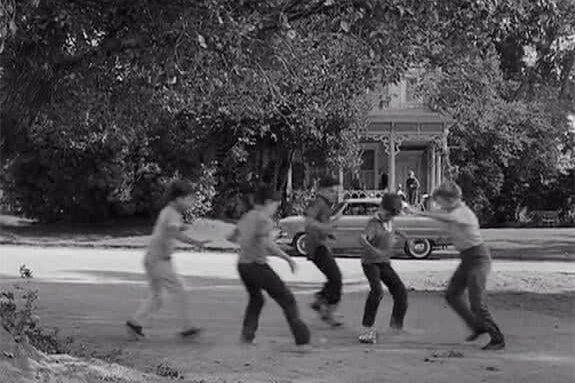
Kick the Can was a mix of hide-and-seek, tag, and pure neighborhood drama. One player guarded the can while everyone else scattered to hide. If you could sneak back and kick the can before being tagged, all the captured players were freed. Games could stretch on for hours, especially at dusk when shadows and porch lights added to the excitement. The game needed nothing more than an old tin can and a group of kids, yet it provided endless fun. For boomers, Kick the Can wasn’t just a pastime, it was a way to gather the entire neighborhood into one big adventure.
22. Red Rover

Red Rover was a game that tested both courage and teamwork. Two lines of kids stood facing each other, holding hands tightly, and dared someone from the opposite team to run through and break their chain. If the runner broke through, they won a teammate back; if not, they were captured. The thrill came from charging full speed, hoping you’d find a weak spot, and the laughter that followed when you didn’t. It could be rough on arms and shoulders, but the excitement of building strategies and shouting chants made it one of the most unforgettable playground games of the boomer era.
23. Marbles
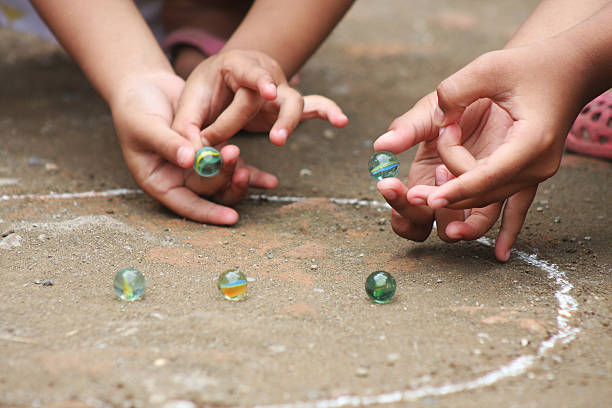
Marbles were both a collectible hobby and a serious competition. Kids would draw a chalk circle, place their marbles inside, and take turns shooting a larger “shooter” marble to knock others out. Winners kept the marbles they hit, which meant high-stakes games where treasured “cat’s eyes” or “aggies” were on the line. Beyond the game itself, marbles came in endless designs, colors, and swirls that fascinated collectors. Pocketfuls of marbles jingling on the way to school were a common sound, and the pride of winning a friend’s prized marble created memories as lasting as the games themselves.
24. Jacks

Jacks was one of the simplest yet most skillful games kids played on sidewalks and smooth floors. With a small rubber ball and a set of metal or plastic jacks, players bounced the ball and tried to scoop up an increasing number of jacks before the ball hit the ground again. The game demanded quick reflexes, focus, and dexterity, often improving with hours of practice. Though it could be played alone, it was even better in groups, where kids challenged each other to ever-harder rounds. For many boomers, Jacks was a perfect example of how a simple game could create hours of entertainment without batteries, screens, or noise.
25. Pick-Up Sticks

Pick-Up Sticks was a game of patience and precision. A bundle of thin, colorful sticks was dropped into a messy pile, and players took turns trying to remove one without disturbing the others. It looked easy at first, but the slightest tremor could send the whole heap shifting, ending your turn. Kids quickly learned steady hands and careful planning were the keys to success. Though it didn’t have flashing lights or moving parts, it demanded concentration and sparked plenty of laughter when a pile collapsed. It was simple enough to play anywhere and taught the value of slowing down in a fast-moving world.
26. Stickball
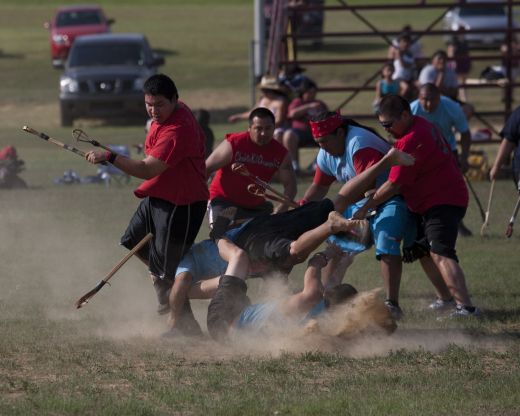
Stickball was the ultimate city street sport and a rite of passage for many boomer kids. All it required was a broom handle, a pink Spaldeen ball, and a street clear enough to play. Sewer lids, manhole covers, or parked cars served as makeshift bases, and games often lasted until dinner was called, or until a neighbor shouted about the noise. The rules were loosely based on baseball, but the spirit was pure neighborhood competition. Stickball was about teamwork, community, and the joy of turning ordinary city blocks into playgrounds, leaving behind memories that lasted long after the games ended.
27. Kickball and Four Square

Kickball and Four Square rounded out the classic playground lineup. Kickball was baseball’s simpler cousin, played with a large rubber ball rolled to the “batter,” who kicked it as far as possible before running the bases. Its inclusive nature meant everyone could join in, from the most athletic to the youngest kids. Four Square, on the other hand, was about quick reflexes and strategy. Played on a chalked blacktop court, it challenged kids to stay in the game by bouncing the ball into opponents’ squares until they were eliminated. Both games encouraged teamwork, laughter, and endless rematches, making them staples of recess and neighborhood afternoons.
Which Ones Did We Miss?

Every boomer childhood was shaped by the toys, games, and imagination of the moment. Some kids had shiny store-bought favorites, while others made their own fun from whatever was nearby. Whether it was building forts, staging cowboy duels, or racing down a Slip ’N Slide, these memories remind us that joy didn’t need screens or technology, just friends, creativity, and a little room to play. Did we leave out one of your favorites? Share your own unforgettable toys and games in the comments.
This story 27 Toys and Games Boomers Loved That Most Kids Today Wouldn’t Recognize was first published on Daily FETCH


